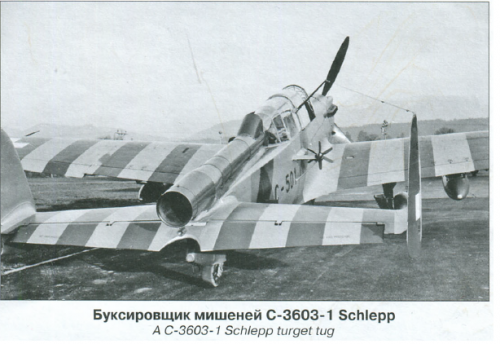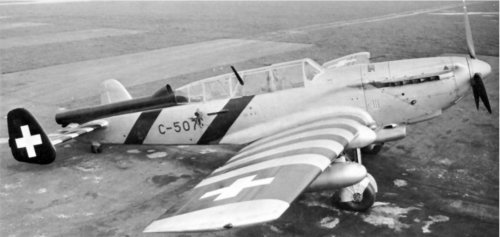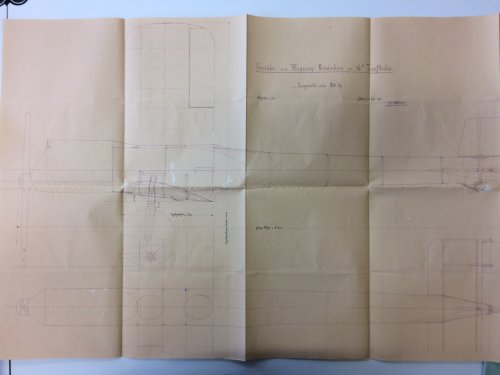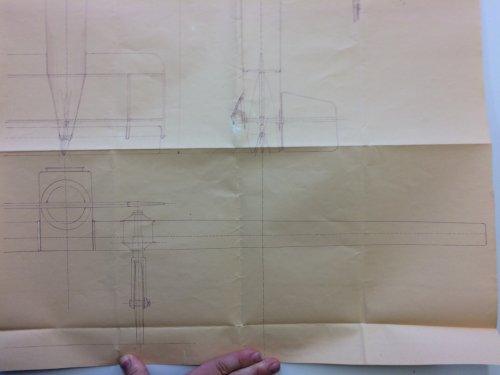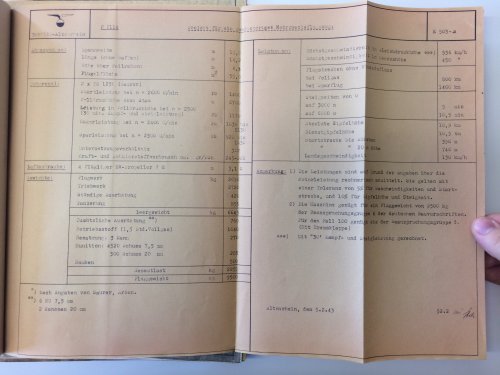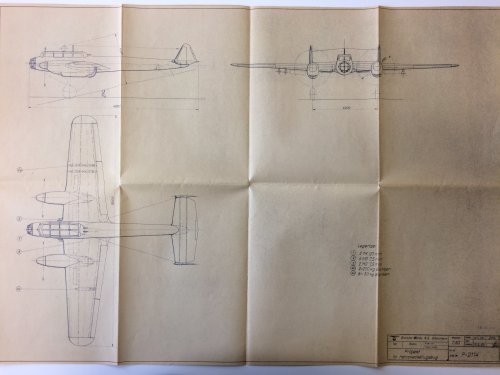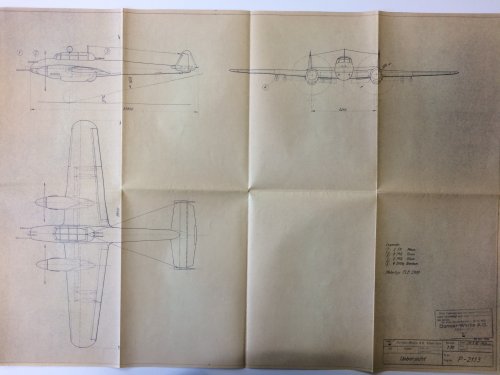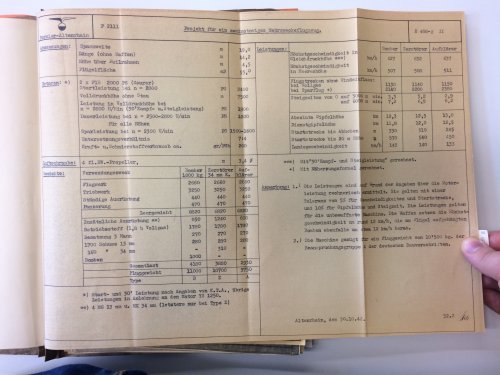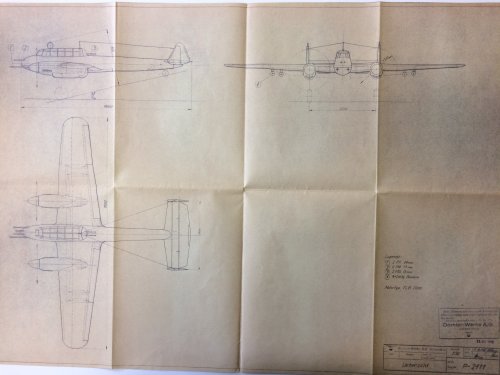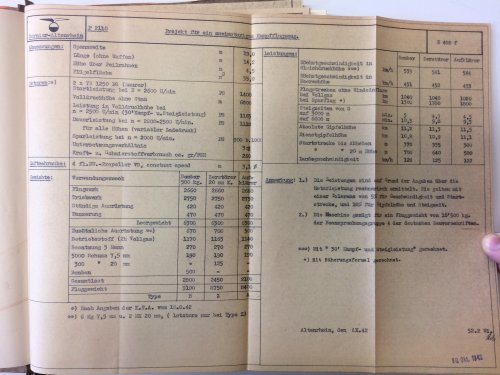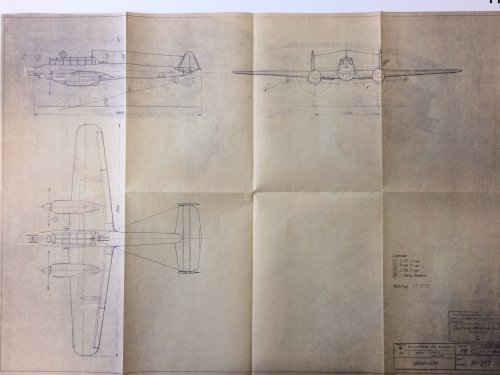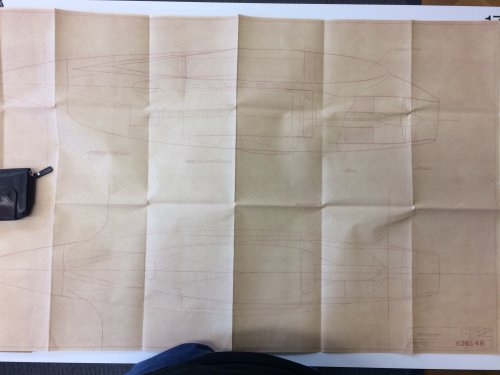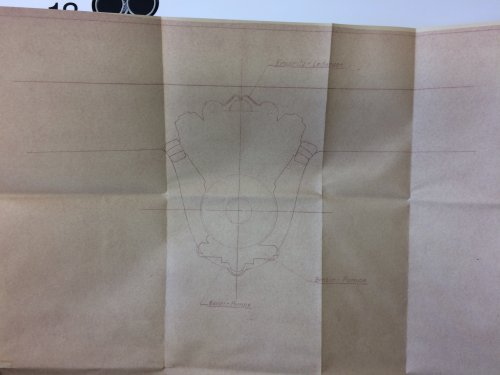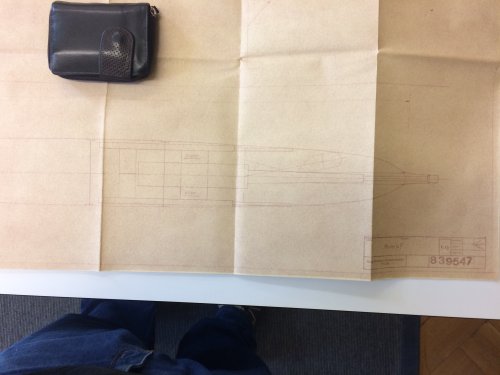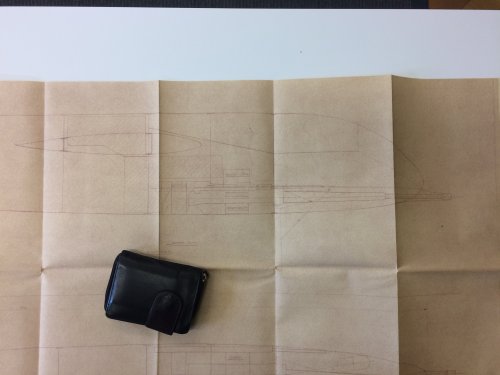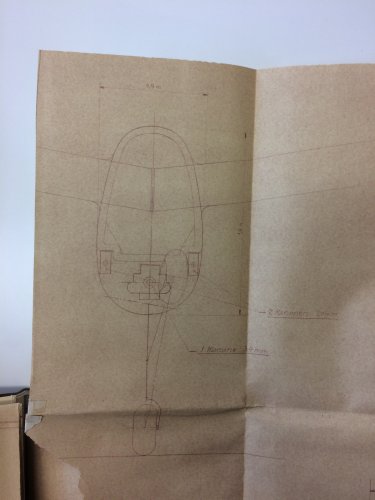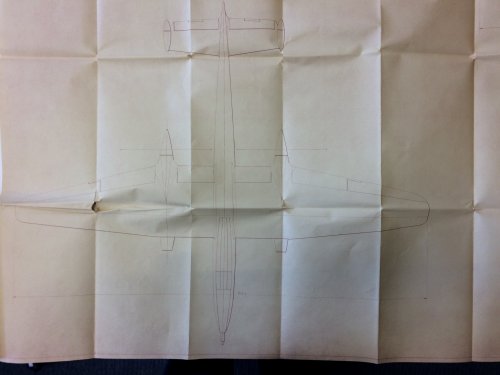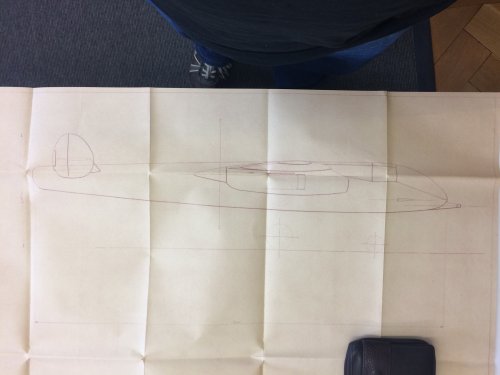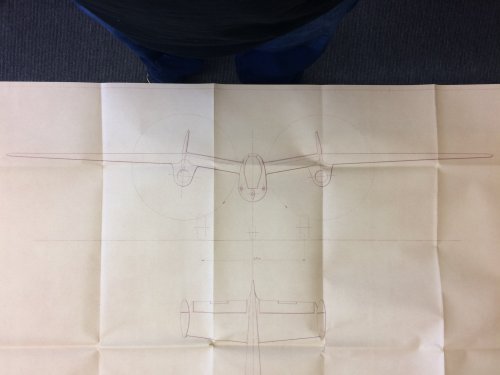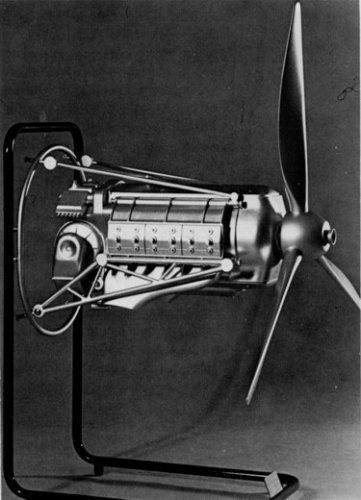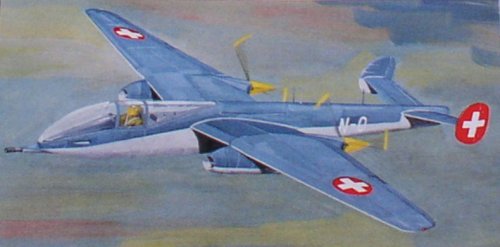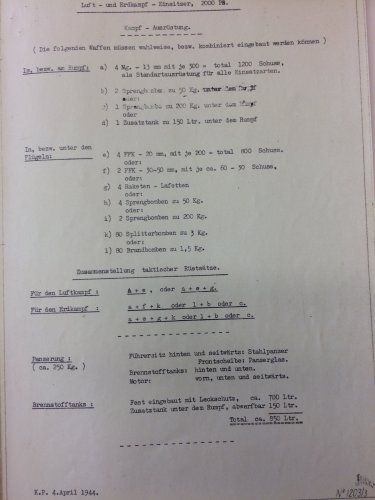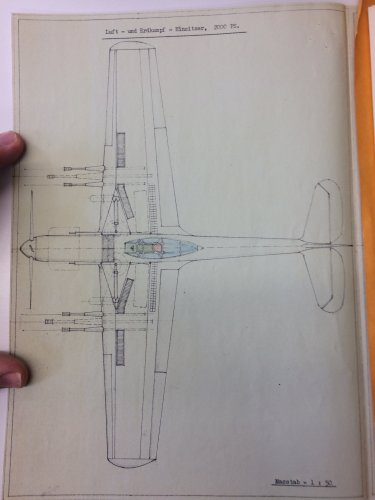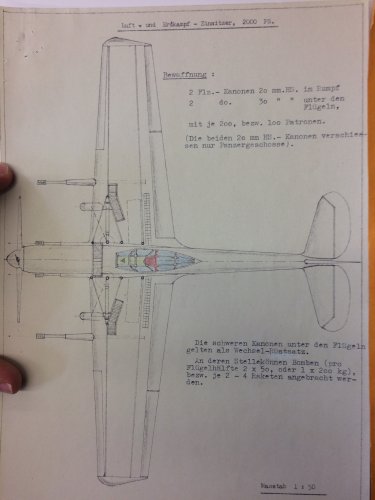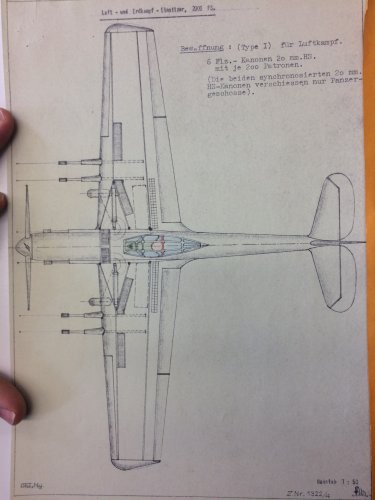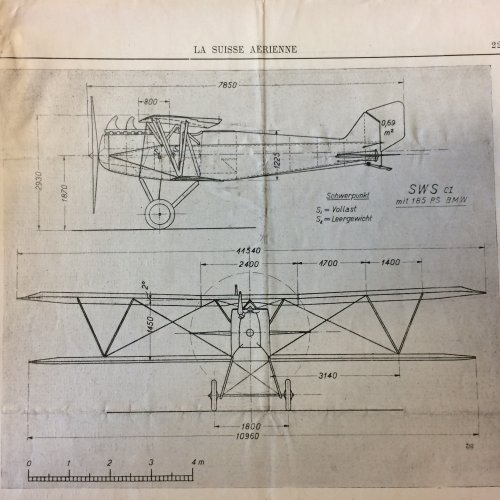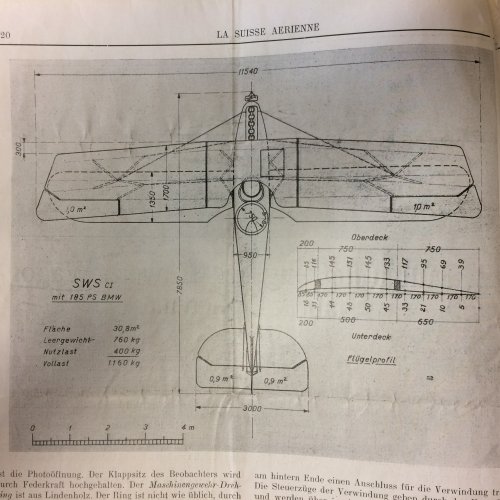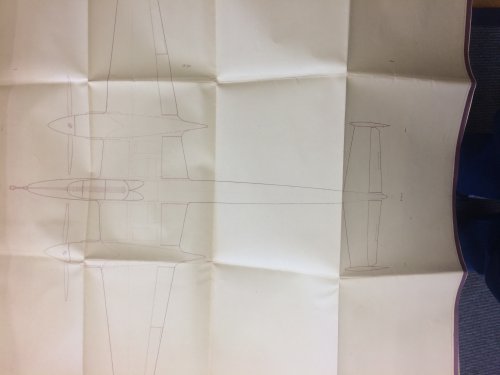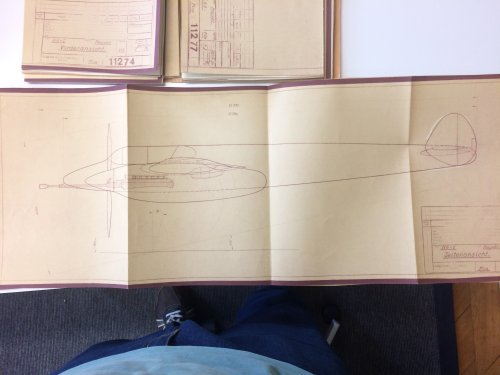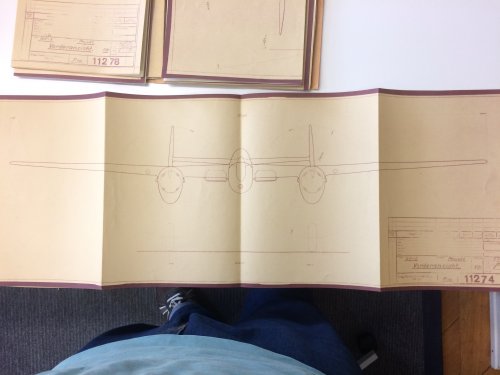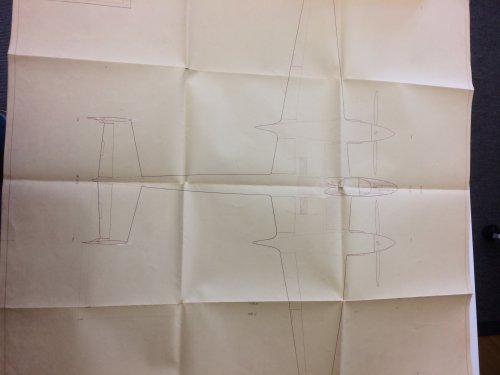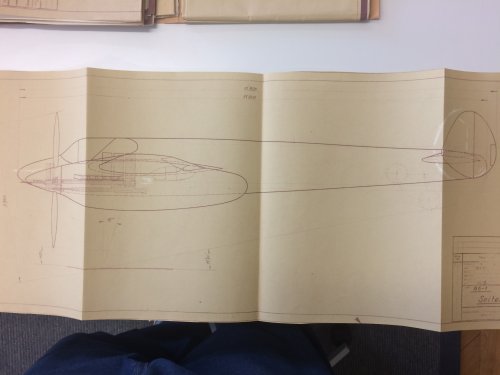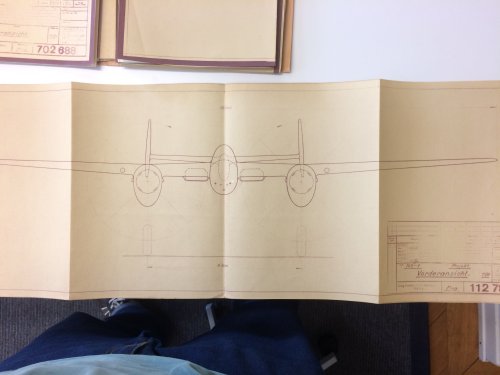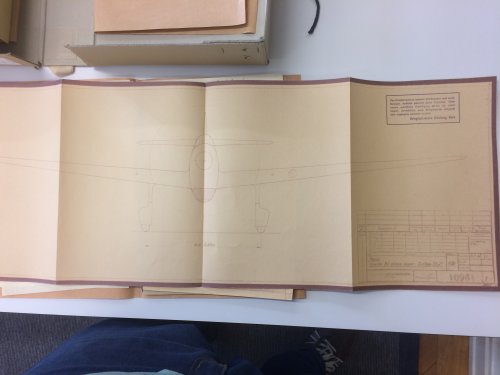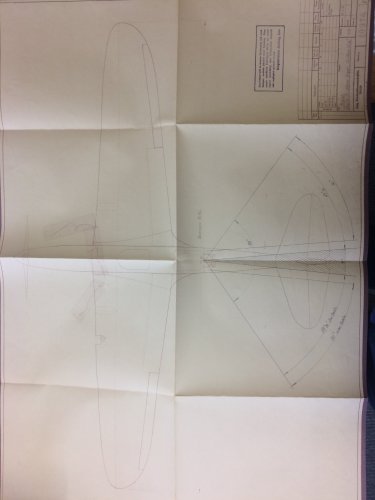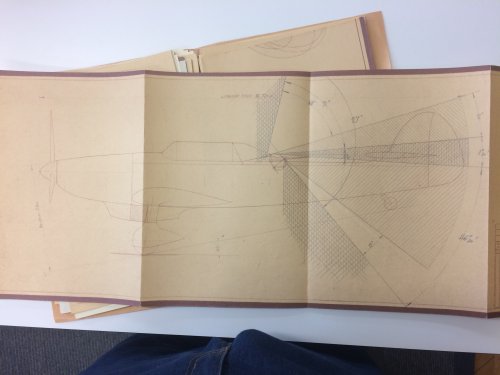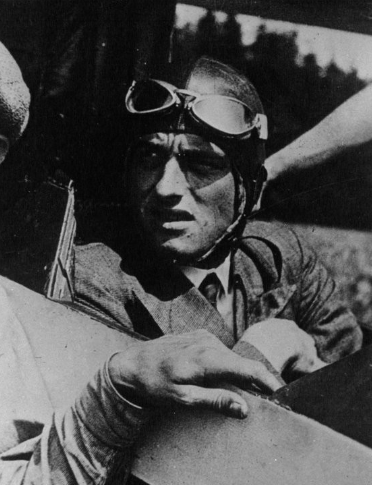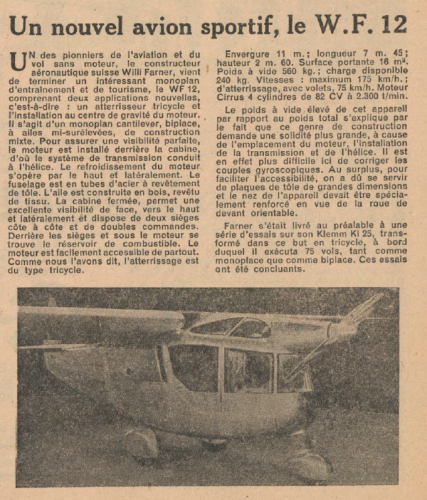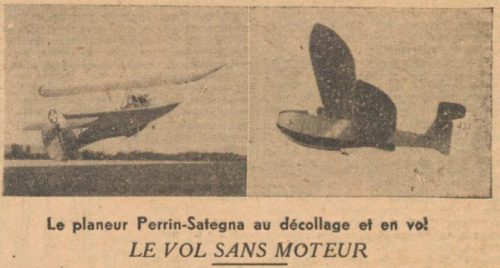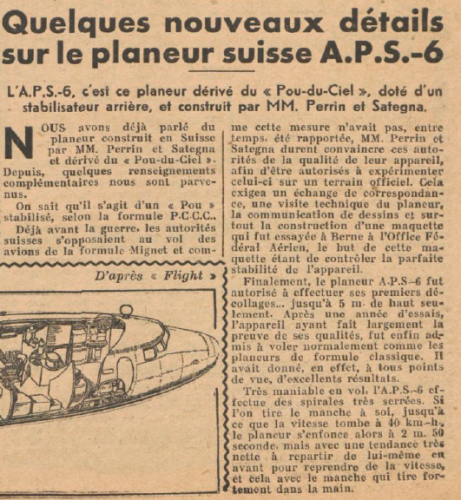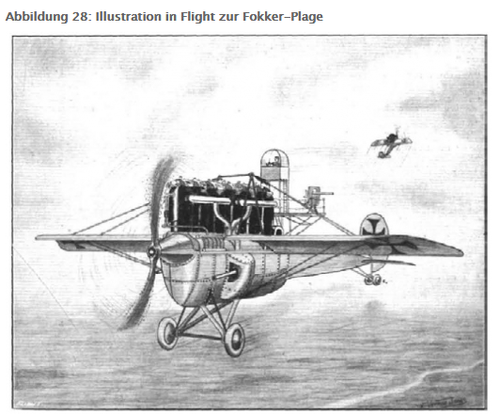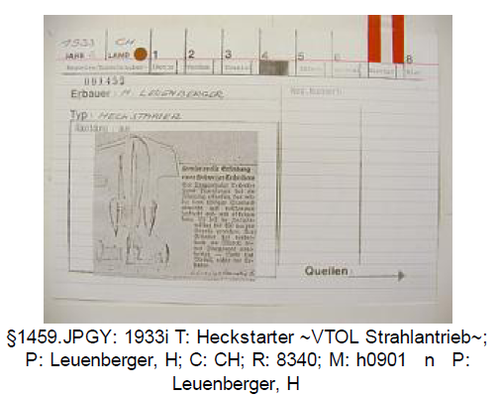You are using an out of date browser. It may not display this or other websites correctly.
You should upgrade or use an alternative browser.
You should upgrade or use an alternative browser.
Projects in Switzerland
- Thread starter richard
- Start date
- Joined
- 6 November 2010
- Messages
- 5,262
- Reaction score
- 5,514
https://old.hermannkeist.ch/c-3603-1-schlepp.html
Ausstoss-Rohr - literally: ejection tube - target ejector
Ausgerüstet mit Schleppsack, Ausstoss-Rohr auf Rumpfoberseite = Equipped with a [towed] target drogue, target ejector on the fuselage top.
Schleppsack - literallly: towed sack - target drogueC-3603-1 Schlepp
Umbau 1946 zu Schleppflugzeug. Ausgerüstet mit Schleppsack, Ausstoss-Rohr auf Rumpfoberseite, dieses Flugzeug wurde mit Silberfarbe und rotem Balken bemalt. Es wurden 1946 zwanzig Flugzeuge in den Farner-Werken, Grenchen, umgebaut.
Ausstoss-Rohr - literally: ejection tube - target ejector
Ausgerüstet mit Schleppsack, Ausstoss-Rohr auf Rumpfoberseite = Equipped with a [towed] target drogue, target ejector on the fuselage top.
Attachments
- Joined
- 26 May 2006
- Messages
- 34,901
- Reaction score
- 15,761
Kuno said:All in all 20 aircraft were modified to this configuration in 1946. Work was done by "Farner" in Grenchen.
New Info,thank you my dear Kuno.
Mizutayio
I really should change my personal text
- Joined
- 30 January 2017
- Messages
- 17
- Reaction score
- 19
Allright, was this is my first time writing somethign on this forum: I am a swiss historian who is interested in the Swiss Tank and Aircraft development and Projects.
I have some nice treats for you guys:
Hoffmann Eindecker (feruary 1928)
It was meant to be a full metal monoplane designed by Oberstleutnatn Hoffmann. It was discontinued due to the fact that it would have been heavier than initially thought and in combination with the wingsurface it's stall, takeoff and landing speed would have been to high.
Length: 8.4 m
Wingspan: 10 m
Engine; 250 hp
Top speed: 139 km/h
weight: 1325 kg
wing surface: 16 m2
Armament: 2x MG11
Crew: 2
I have some nice treats for you guys:
Hoffmann Eindecker (feruary 1928)
It was meant to be a full metal monoplane designed by Oberstleutnatn Hoffmann. It was discontinued due to the fact that it would have been heavier than initially thought and in combination with the wingsurface it's stall, takeoff and landing speed would have been to high.
Length: 8.4 m
Wingspan: 10 m
Engine; 250 hp
Top speed: 139 km/h
weight: 1325 kg
wing surface: 16 m2
Armament: 2x MG11
Crew: 2
Attachments
Mizutayio
I really should change my personal text
- Joined
- 30 January 2017
- Messages
- 17
- Reaction score
- 19
I don't know if i'm allowed to post twice in a row, so if i'm not, please excuse me.
This time i bring you 4 Twin engined fighters from february 1943. Why These have been designed is not known, not even in the documents i've gathered in the swiss national archives mention that. The Aircraft were designed and meant to be manufactured in the Dornier-Werke Altenrhein, the same factory that built the D-38's and later in history, the P-16. The Planes all start with P-21 and are:
P-2110
P-2111
P-2113 and
P-2114
which themselves can be grouped in 2 classes:
Fighters with the a 1250hp Saurer YS engine ( P-2110, P-2114)
Fighters with the 200hp FLB 2000 engine ( P-2111, P-2113)
Funnily enough the only real external difference between the P-2111 and P-2113 is the cabin size as the Armament, airframe, wings, engine are exactly the same.
The P-2110 was considered the lightest aircraft due to it's armament ( 2x 20mm and 4x 7.5mm machineguns in the nose, a twin MG in the rear and 2x 200 kg bombs)
P-2114 was considered the Multirole version, it's armament is similar to that of the P-2110 with the only difference beeing two bomb options: one being the standard 2x 200 kg bombs and the other being 8x 50 kg
P-2111 and P-2113 were the heaviest of the bunch with the bigger armament consisting of 2x 34mm and 2x 13mm MG in the nose, a twin 13mm MG in the rear and 4x 200 kg Bombs.
One thing to note is that the armament options for P-2110 and P-2111 is the fully loaded "Zerstörer" Versions, the Standard versions only had the MG's and a 400, respectively 800 kg Bomb load. The Zerstörer Option merely adds the high caliber guns.
There's also a "Bomber" version which is only the MGs and additional 500 (2110) or 600 kg (2111) Bomb rack in the fuselage.
Since this post would be to long to write the technical data of all of these planes i'll be posting the archive images down below.
I have a couple more interesting secret projects coming up. Including a Single Engined Multirole fighter and 2 other Twin engined fighters, one of which is a pusher aircraft.
This time i bring you 4 Twin engined fighters from february 1943. Why These have been designed is not known, not even in the documents i've gathered in the swiss national archives mention that. The Aircraft were designed and meant to be manufactured in the Dornier-Werke Altenrhein, the same factory that built the D-38's and later in history, the P-16. The Planes all start with P-21 and are:
P-2110
P-2111
P-2113 and
P-2114
which themselves can be grouped in 2 classes:
Fighters with the a 1250hp Saurer YS engine ( P-2110, P-2114)
Fighters with the 200hp FLB 2000 engine ( P-2111, P-2113)
Funnily enough the only real external difference between the P-2111 and P-2113 is the cabin size as the Armament, airframe, wings, engine are exactly the same.
The P-2110 was considered the lightest aircraft due to it's armament ( 2x 20mm and 4x 7.5mm machineguns in the nose, a twin MG in the rear and 2x 200 kg bombs)
P-2114 was considered the Multirole version, it's armament is similar to that of the P-2110 with the only difference beeing two bomb options: one being the standard 2x 200 kg bombs and the other being 8x 50 kg
P-2111 and P-2113 were the heaviest of the bunch with the bigger armament consisting of 2x 34mm and 2x 13mm MG in the nose, a twin 13mm MG in the rear and 4x 200 kg Bombs.
One thing to note is that the armament options for P-2110 and P-2111 is the fully loaded "Zerstörer" Versions, the Standard versions only had the MG's and a 400, respectively 800 kg Bomb load. The Zerstörer Option merely adds the high caliber guns.
There's also a "Bomber" version which is only the MGs and additional 500 (2110) or 600 kg (2111) Bomb rack in the fuselage.
Since this post would be to long to write the technical data of all of these planes i'll be posting the archive images down below.
I have a couple more interesting secret projects coming up. Including a Single Engined Multirole fighter and 2 other Twin engined fighters, one of which is a pusher aircraft.
Attachments
- Joined
- 9 October 2009
- Messages
- 21,973
- Reaction score
- 13,630
Thanks, Mizutayio!
Mizutayio
I really should change my personal text
- Joined
- 30 January 2017
- Messages
- 17
- Reaction score
- 19
Since People seem to like the planes i've gathered in the archives. Here's another one.
This one sadly has no name, it's a plane designed by K+W Thun and is a 1941 project of a twin engined pusher aircraft with a nose wheel.
It's armament would have consisted of 1x 34mm cannon, 2x 20mm guns and 4x 7.5mm MGs
It would have had 2x 1200 hp Hispano-Suiza engines with 2 Propellers, one going clockwise and the other going counterclockwise.In the front of the engine there would have been a fan sucking air into the engine which would have allowed for some efficient cooling even when standing on the ground.
It would have had a nose wheel design with it's back wheels mounted in the fusaleage rather than the engine pod. Another reasoning for a nose wheel design was that it's much less prone to accidents when landing or when maneuvering on the ground. (Less nosedives when landing, better vesibility when rolling, when landing the pilot could activate the brakes immediately at full force.
It's fuselage was also very narrow and egg shaped, in addition to the very small engine pods with the engine mounted inside the wing, it would have saved a lot of space and would reduce the drag by a lot.
The reasoning behind the Pusher aircraft was that, due to the fact that the props were behind the main wing, was that it would reduce drag. It's top speed would have been 700 km/h at 5000 meters and 650 km/h at 4500 meters.
Length: 13 meters
wingspan: 15.8 meters
wingsurface: 35.5 m2
weight empty: 4600 kg
weight loaded: 6000 kg
Overall this seems like it would have been a pretty good aircraft for it's time with the main goal being to reduce drag as much as possible. Sadly i don't know a thing about aerodynamics so i can't tell for sure if it would have worked. If someone wants the details, let me know i have taken an image of all pages. It explains all the thought behind it's design.
This one sadly has no name, it's a plane designed by K+W Thun and is a 1941 project of a twin engined pusher aircraft with a nose wheel.
It's armament would have consisted of 1x 34mm cannon, 2x 20mm guns and 4x 7.5mm MGs
It would have had 2x 1200 hp Hispano-Suiza engines with 2 Propellers, one going clockwise and the other going counterclockwise.In the front of the engine there would have been a fan sucking air into the engine which would have allowed for some efficient cooling even when standing on the ground.
It would have had a nose wheel design with it's back wheels mounted in the fusaleage rather than the engine pod. Another reasoning for a nose wheel design was that it's much less prone to accidents when landing or when maneuvering on the ground. (Less nosedives when landing, better vesibility when rolling, when landing the pilot could activate the brakes immediately at full force.
It's fuselage was also very narrow and egg shaped, in addition to the very small engine pods with the engine mounted inside the wing, it would have saved a lot of space and would reduce the drag by a lot.
The reasoning behind the Pusher aircraft was that, due to the fact that the props were behind the main wing, was that it would reduce drag. It's top speed would have been 700 km/h at 5000 meters and 650 km/h at 4500 meters.
Length: 13 meters
wingspan: 15.8 meters
wingsurface: 35.5 m2
weight empty: 4600 kg
weight loaded: 6000 kg
Overall this seems like it would have been a pretty good aircraft for it's time with the main goal being to reduce drag as much as possible. Sadly i don't know a thing about aerodynamics so i can't tell for sure if it would have worked. If someone wants the details, let me know i have taken an image of all pages. It explains all the thought behind it's design.
Attachments
Hardrada55
ACCESS: Confidential
- Joined
- 31 May 2008
- Messages
- 111
- Reaction score
- 85
What is an F1B 2000 engine? Looks like an inverted "V"?
Hardrada55
ACCESS: Confidential
- Joined
- 31 May 2008
- Messages
- 111
- Reaction score
- 85
- Joined
- 11 March 2006
- Messages
- 8,625
- Reaction score
- 3,805
Many thanks for those drawings ! Some years ago, a painting made by Roland Eichenberger of this type was shown in
a forum (couldn't find it here, so it may have been in another forum), published in AeroRevue N° 6/2000.
Was described there as an anti-tank aircraft, plausible with that heavy armament.
a forum (couldn't find it here, so it may have been in another forum), published in AeroRevue N° 6/2000.
Was described there as an anti-tank aircraft, plausible with that heavy armament.
Attachments
Mizutayio
I really should change my personal text
- Joined
- 30 January 2017
- Messages
- 17
- Reaction score
- 19
Here's the next plane which again, has an unknown name, it was designed in the year 1944 and was meant to be a 2000 hp engined ( due to the fact that it's a 1944 plane and the engine was apparently made by Saurer it's likely the Saurer FLB).
In addition, this plane was also designed in paralell to the P-21 twin engined fighters and was made by the Dornierwerke.
Standard Armament was considered to be 4 synchronized 13mm MGs, there were also plans to add 2x 20mm Synchronized guns and even 4 synchronized guns, however the later one was very quickly dropped as the limited space would have meant that top speed would have been limited.
There were also plans to completely remove the synchronized guns so a supercharger could be mounted.
Secondary armament were mounted in the wings and were considered to be:
4x 20mm guns
2x 30-50mm guns
Rockets and Bombs
They were meant to be interchangeable in order to change the aircrafts purpose. Arm it with the 20 mm guns and it would be suited for aerial combat, equip the large caliber guns, rockets or bombs and be an attack aircraft.
It's top speed was calculated to be 650- 680 km/h at 6000 meters, it's service ceiling was meant to be 12000 meters, It's landing speed was meant to be 180 km/h ( could also be the stall speed, not sure about that one).
It's weight was calculated to be arround 4.8-5 tons for the fighter and 5.5-5.7 tons for the Ground attack version
Sadly enough, i couldn't find any side or frontal drawings, so if anyone knows anything, please let me know because i'm very unlikely to find it in the archives as the only document on this aircraft was the one i got.
In addition, this plane was also designed in paralell to the P-21 twin engined fighters and was made by the Dornierwerke.
Standard Armament was considered to be 4 synchronized 13mm MGs, there were also plans to add 2x 20mm Synchronized guns and even 4 synchronized guns, however the later one was very quickly dropped as the limited space would have meant that top speed would have been limited.
There were also plans to completely remove the synchronized guns so a supercharger could be mounted.
Secondary armament were mounted in the wings and were considered to be:
4x 20mm guns
2x 30-50mm guns
Rockets and Bombs
They were meant to be interchangeable in order to change the aircrafts purpose. Arm it with the 20 mm guns and it would be suited for aerial combat, equip the large caliber guns, rockets or bombs and be an attack aircraft.
It's top speed was calculated to be 650- 680 km/h at 6000 meters, it's service ceiling was meant to be 12000 meters, It's landing speed was meant to be 180 km/h ( could also be the stall speed, not sure about that one).
It's weight was calculated to be arround 4.8-5 tons for the fighter and 5.5-5.7 tons for the Ground attack version
Sadly enough, i couldn't find any side or frontal drawings, so if anyone knows anything, please let me know because i'm very unlikely to find it in the archives as the only document on this aircraft was the one i got.
Attachments
- Joined
- 26 May 2006
- Messages
- 34,901
- Reaction score
- 15,761
Mizutayio said:It apparently was from the Dornierwerke.
But don't worry, i still have one project from K+W which i want to show
OK Mizutayio,
but as I know EFW was taken over EKW & Dornier Werke in 1932,but they still seperated factories.
Mizutayio
I really should change my personal text
- Joined
- 30 January 2017
- Messages
- 17
- Reaction score
- 19
Mizutayio
I really should change my personal text
- Joined
- 30 January 2017
- Messages
- 17
- Reaction score
- 19
Here's a light version of my normal Aircraft showcase as i didn't find any technical data on the plane yet. So i'll have to return to the archives at a later time. Hopefully this summer.
Anyway, the Plane is called the N-6.1 and N-6.2.
N-6.1 appears to feature 3x 20mm guns and 2x 7.5 mm guns while N-6.2 seems to have a single 34mm gun.
If anyone knows anything about this plane, let me know, otherwise, you'll likely hear more about that plane in at least 3 months.
Anyway, the Plane is called the N-6.1 and N-6.2.
N-6.1 appears to feature 3x 20mm guns and 2x 7.5 mm guns while N-6.2 seems to have a single 34mm gun.
If anyone knows anything about this plane, let me know, otherwise, you'll likely hear more about that plane in at least 3 months.
Attachments
- Joined
- 26 May 2006
- Messages
- 34,901
- Reaction score
- 15,761
Amazing find,many thanks to you Mizutayio,
and in reply # 17,I spoke about SWS C-1,good drawing,for EFW (K+W Factory) N-6 it's
new for me,all i know about the early of this series,the N-0 was a jet trainer Project,the
N-6.01 was a heavy fighter and N-6.02 was a heavy combat and canon-fighter as I guess.
and in reply # 17,I spoke about SWS C-1,good drawing,for EFW (K+W Factory) N-6 it's
new for me,all i know about the early of this series,the N-0 was a jet trainer Project,the
N-6.01 was a heavy fighter and N-6.02 was a heavy combat and canon-fighter as I guess.
- Joined
- 28 January 2008
- Messages
- 635
- Reaction score
- 511
Mentioned in previous posts was work done on C-3603-1 by Farner-Werken, Grenchen.
Willi Farner was born in Cologne on 6th October 1905 Cologne and died on 8 November 1978. In 1923, he built his first hang glider (WF.1), followed by several others. By 1925 he had made his name in Swiss aviation as a glider pioneer. Around 1925 at Etzel, Switzerland he established a duration record in gliding.
In 1932 he earned his professional pilot's certificate and in the same year, with the WF.5 glider, he demonstrated his skills at the international flight meeting in Dübendorf flying glider acrobatics.
After attending the industrial school in Zurich he established a course in 1931 based in Grenchen 1931 for unemployed watchmakers, who were retrained to aircraft manufacturers.
In 1934, Farner became the sole proprietorship of Willi Farner Flugzeugbau - Grenchen with part of the retrained workforce. They made aircraft parts for the army, hang gliders, gliders and motor gliders as well as producing his own series of gliders.
In 1942 saw the founding of Farner Motorenbau AG in Moutier, with which the company merged in 1946 in Grenchen. Among the product of this period was the fixed tricycle undercarriage, single engine W.F.12 - see attached article.
Both factories were blacklisted by Britain in 1943 because the company in Moutier had been funded with German money.
In the 1960s, Farner took over the aircraft maintenance for the airfields Grenchen and Sion (Farner Air Service AG). Here he served as the company's director and chairman from 1934-78.
The name Farner was continued post-war with the Hans Farner designed HF Colibri canard motor glider.
Details of the W.F.12
Engine: 1 x Cirrus 4-cylinder (82 hp)
Wing Span: 11.00 m
Length: 7.45 m
Height: 2.60 m
Wing Area: 16 sq m
Empty Weight: 560 kg
Payload: 240 kg
Maximum Speed: 175 km/h
Landing Speed: 75 km/h
A photo of Willi Farner is also attached.
Sources:
Cockpit May 1986
L'Air April 1944
www.farner-swiss.ch
www.hls-dhs-dss.ch/textes/d/D32129.php
Willi Farner was born in Cologne on 6th October 1905 Cologne and died on 8 November 1978. In 1923, he built his first hang glider (WF.1), followed by several others. By 1925 he had made his name in Swiss aviation as a glider pioneer. Around 1925 at Etzel, Switzerland he established a duration record in gliding.
In 1932 he earned his professional pilot's certificate and in the same year, with the WF.5 glider, he demonstrated his skills at the international flight meeting in Dübendorf flying glider acrobatics.
After attending the industrial school in Zurich he established a course in 1931 based in Grenchen 1931 for unemployed watchmakers, who were retrained to aircraft manufacturers.
In 1934, Farner became the sole proprietorship of Willi Farner Flugzeugbau - Grenchen with part of the retrained workforce. They made aircraft parts for the army, hang gliders, gliders and motor gliders as well as producing his own series of gliders.
In 1942 saw the founding of Farner Motorenbau AG in Moutier, with which the company merged in 1946 in Grenchen. Among the product of this period was the fixed tricycle undercarriage, single engine W.F.12 - see attached article.
Both factories were blacklisted by Britain in 1943 because the company in Moutier had been funded with German money.
In the 1960s, Farner took over the aircraft maintenance for the airfields Grenchen and Sion (Farner Air Service AG). Here he served as the company's director and chairman from 1934-78.
The name Farner was continued post-war with the Hans Farner designed HF Colibri canard motor glider.
Details of the W.F.12
Engine: 1 x Cirrus 4-cylinder (82 hp)
Wing Span: 11.00 m
Length: 7.45 m
Height: 2.60 m
Wing Area: 16 sq m
Empty Weight: 560 kg
Payload: 240 kg
Maximum Speed: 175 km/h
Landing Speed: 75 km/h
A photo of Willi Farner is also attached.
Sources:
Cockpit May 1986
L'Air April 1944
www.farner-swiss.ch
www.hls-dhs-dss.ch/textes/d/D32129.php
Attachments
- Joined
- 28 January 2008
- Messages
- 635
- Reaction score
- 511
Mentioned in previous posts was work done on C-3603-1 by Farner-Werken, Grenchen.
Willi Farner was born in Cologne on 6th October 1905 Cologne and died on 8 November 1978. In 1923, he built his first hang glider (WF.1), followed by several others. By 1925 he had made his name in Swiss aviation as a glider pioneer. Around 1925 at Etzel, Switzerland he established a duration record in gliding.
In 1932 he earned his professional pilot's certificate and in the same year, with the WF.5 glider, he demonstrated his skills at the international flight meeting in Dübendorf flying glider acrobatics.
After attending the industrial school in Zurich he established a course in 1931 based in Grenchen 1931 for unemployed watchmakers, who were retrained to aircraft manufacturers.
In 1934, Farner became the sole proprietorship of Willi Farner Flugzeugbau - Grenchen with part of the retrained workforce. They made aircraft parts for the army, hang gliders, gliders and motor gliders as well as producing his own series of gliders.
In 1942 saw the founding of Farner Motorenbau AG in Moutier, with which the company merged in 1946 in Grenchen. Among the product of this period was the fixed tricycle undercarriage, single engine W.F.12 - see attached article.
Both factories were blacklisted by Britain in 1943 because the company in Moutier had been funded with German money.
In the 1960s, Farner took over the aircraft maintenance for the airfields Grenchen and Sion (Farner Air Service AG). Here he served as the company's director and chairman from 1934-78.
Details of the W.F.12
Engine: 1 x Cirrus 4-cylinder (82 hp)
Wing Span: 11.00 m
Length: 7.45 m
Height: 2.60 m
Wing Area: 16 sq m
Empty Weight: 560 kg
Payload: 240 kg
Maximum Speed: 175 km/h
Landing Speed: 75 km/h
A photo of Willi Farner is also attached.
Post posting note: Apologies to Maveric, Skyblazer and Apophenia , but my initial forum search did not disclose the designation section entry for Farner at https://www.secretprojects.co.uk/forum/index.php/topic,8376.msg290022.html#msg290022
Sorry for some biographic duplication.
Sources:
L'Air April 1944
www.hls-dhs-dss.ch/textes/d/D32129.php
Willi Farner was born in Cologne on 6th October 1905 Cologne and died on 8 November 1978. In 1923, he built his first hang glider (WF.1), followed by several others. By 1925 he had made his name in Swiss aviation as a glider pioneer. Around 1925 at Etzel, Switzerland he established a duration record in gliding.
In 1932 he earned his professional pilot's certificate and in the same year, with the WF.5 glider, he demonstrated his skills at the international flight meeting in Dübendorf flying glider acrobatics.
After attending the industrial school in Zurich he established a course in 1931 based in Grenchen 1931 for unemployed watchmakers, who were retrained to aircraft manufacturers.
In 1934, Farner became the sole proprietorship of Willi Farner Flugzeugbau - Grenchen with part of the retrained workforce. They made aircraft parts for the army, hang gliders, gliders and motor gliders as well as producing his own series of gliders.
In 1942 saw the founding of Farner Motorenbau AG in Moutier, with which the company merged in 1946 in Grenchen. Among the product of this period was the fixed tricycle undercarriage, single engine W.F.12 - see attached article.
Both factories were blacklisted by Britain in 1943 because the company in Moutier had been funded with German money.
In the 1960s, Farner took over the aircraft maintenance for the airfields Grenchen and Sion (Farner Air Service AG). Here he served as the company's director and chairman from 1934-78.
Details of the W.F.12
Engine: 1 x Cirrus 4-cylinder (82 hp)
Wing Span: 11.00 m
Length: 7.45 m
Height: 2.60 m
Wing Area: 16 sq m
Empty Weight: 560 kg
Payload: 240 kg
Maximum Speed: 175 km/h
Landing Speed: 75 km/h
A photo of Willi Farner is also attached.
Post posting note: Apologies to Maveric, Skyblazer and Apophenia , but my initial forum search did not disclose the designation section entry for Farner at https://www.secretprojects.co.uk/forum/index.php/topic,8376.msg290022.html#msg290022
Sorry for some biographic duplication.
Sources:
L'Air April 1944
www.hls-dhs-dss.ch/textes/d/D32129.php
The same was the case fro the Pilatus SB-2. The completed project was actually sold to Pilatus who then built it (but only once).
[/quote]
Here I have to correct my earlier statement: It was not the case that the project "SB-2" was sold to Pilatus.
The aircraft was designed and developped by the "Studienbüro für Spezialflugzeuge" at ETHZ on order of the Swiss Civil Aviation
The "Studienbüro" signed a contract with Pilatus for the construction, building and testing of the aircraft
The amount considerd for all those works was not enough... and as I understand now, not all the invoices of Pilauts were paid in the end... this may be the reason why sometimes we read that Pilatus had "bought" the project.
[/quote]
Here I have to correct my earlier statement: It was not the case that the project "SB-2" was sold to Pilatus.
The aircraft was designed and developped by the "Studienbüro für Spezialflugzeuge" at ETHZ on order of the Swiss Civil Aviation
The "Studienbüro" signed a contract with Pilatus for the construction, building and testing of the aircraft
The amount considerd for all those works was not enough... and as I understand now, not all the invoices of Pilauts were paid in the end... this may be the reason why sometimes we read that Pilatus had "bought" the project.
- Joined
- 26 May 2006
- Messages
- 34,901
- Reaction score
- 15,761
Kuno said:...I am focusing on the SB-2 at present. The target is to have its full story published in a little book in the first half of 2019... still a far way to go...
OK dear Kuno,
but I spoke generally about all Switzerland aircraft Projects ?.
- Joined
- 11 March 2012
- Messages
- 3,249
- Reaction score
- 3,179
Since the Pilatus SB-2’s strut-braced, high aspect ratio wing resembles some of the Hurel-Dubois transports - built in France post-war - we wonder if Maurice Hurel helped design the SB-2’s wing. SB-2 looks like a Brossard had a rear-end collision with a Hurel-Dubois design.
The complex forward-sweep wing looks like it was intended to improve visibility from the cockpit, like Bolkow Junior. ThE Sb-2 wing looks like a simplified version of the Westland Lysander’s forward-swept wing. A common complaint about high-winged Cessnas is that the wing root causes you to lose sight of the runway as you turn onto final approach.
SB-2 certainly led the way for Beaver and Brossard. They all share P&W R-985 engines and similar high-aspect ratio wings. Both DHC and Max Holtze used much-simplified, constant chord wings of similar size. DeHavilland of Canada flew the prototype DHC2 Beaver in 1947 and the first Brossard flew in 1952. Rumour has it that the French Army or Air Force wanted to buy Canadian-made Beavers, but the French government insisted on locally-made airplanes, so Max Holtze patterned his Brossard after the Beaver.
The complex forward-sweep wing looks like it was intended to improve visibility from the cockpit, like Bolkow Junior. ThE Sb-2 wing looks like a simplified version of the Westland Lysander’s forward-swept wing. A common complaint about high-winged Cessnas is that the wing root causes you to lose sight of the runway as you turn onto final approach.
SB-2 certainly led the way for Beaver and Brossard. They all share P&W R-985 engines and similar high-aspect ratio wings. Both DHC and Max Holtze used much-simplified, constant chord wings of similar size. DeHavilland of Canada flew the prototype DHC2 Beaver in 1947 and the first Brossard flew in 1952. Rumour has it that the French Army or Air Force wanted to buy Canadian-made Beavers, but the French government insisted on locally-made airplanes, so Max Holtze patterned his Brossard after the Beaver.
Dear Roggerob
I have now thoroughly researched the "SB-2" and whilst the designers were actually "looking" at the wing of the "Lysander", they did not have any technical data of the "Lisanders" wing. But they had a Fieseler Fi 156 "Stosch" avaialbe and also made a wind tunnel model of the "Storch" - the Wing of the SB-2 was an own development of the "Studienbüro für Spezialflugzeuge" at ETH Zürich. There is not a single hint or even avidence that Muarice Hurel was involed at all. I would also strongly doubt that the desing of the SB-2 had any influence on the design of the "Beaver" or later the "Broussard" of Max Holste - the "comparable look" which comes from the use of the "Wasp Junior" and the fact that all three A/C are "high-winged" is possibly visually misleading.
I have now thoroughly researched the "SB-2" and whilst the designers were actually "looking" at the wing of the "Lysander", they did not have any technical data of the "Lisanders" wing. But they had a Fieseler Fi 156 "Stosch" avaialbe and also made a wind tunnel model of the "Storch" - the Wing of the SB-2 was an own development of the "Studienbüro für Spezialflugzeuge" at ETH Zürich. There is not a single hint or even avidence that Muarice Hurel was involed at all. I would also strongly doubt that the desing of the SB-2 had any influence on the design of the "Beaver" or later the "Broussard" of Max Holste - the "comparable look" which comes from the use of the "Wasp Junior" and the fact that all three A/C are "high-winged" is possibly visually misleading.
- Joined
- 25 July 2007
- Messages
- 4,299
- Reaction score
- 4,196
riggerrob said:... Rumour has it that the French Army or Air Force wanted to buy Canadian-made Beavers, but the French government insisted on locally-made airplanes, so Max Holtze patterned his Brossard after the Beaver.
Not really. But there is another Storch connection
The Aviation Légère de l'Armée de Terre was looking for a replacement for its MS 500 Locust (French-built Fi 156). That resulted in the MH.152 which Max Holste derived from his unbuilt MH.150 light utility transport design. But the Salmson-Argus powered MH-152 looked more like a contemporary Cessna design than it did a DHC Beaver.
https://www.secretprojects.co.uk/forum/index.php/topic,18267.msg222917.html#msg222917
ALAT then decided that the MH-152 prototype were too small and underpowered. A simultaneous requirement for colonial utility aircraft was said to have prompted Holste into enlarging the design. And this design process rather mirrors that of 'Jaki' Jakimiuk's original Gipsy Queen-powered DHC-X concept which eventually led to the Beaver.
- Joined
- 26 May 2006
- Messages
- 34,901
- Reaction score
- 15,761
Hi,
I found this strange Fokker-Plage,and I don't know what was it,I know only this company;
https://www.secretprojects.co.uk/th...rly-aircraft-and-projects-later-lublin.26962/
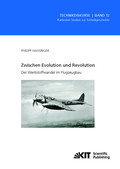
 books.openedition.org
books.openedition.org
I found this strange Fokker-Plage,and I don't know what was it,I know only this company;
https://www.secretprojects.co.uk/th...rly-aircraft-and-projects-later-lublin.26962/

5. Von Pionieren, Bastlern und Ingenieuren
„Wood is not a material which suffers fools gladly and a great deal of the trouble with wooden aeroplanes was due to wooden people.“421 Nach der Darstellung des deutschen Sonderwegs und der Zurückhaltung anderer Nationen im metallenen Flugzeugbau, werden nun wichtige Flugzeugkonstrukteure...
Attachments
Aubi
ACCESS: Secret
Not a project. It's actually a Brttish caricature from 1915, of German Fokker Eindeckers (note casematted guns under the wings, warship-like armor, and another machine gun mounted on something that looks like part of a ship's superstructure, and tiny pilot's nest right behind the giant engine. Fokker Plage means Fokker Scourge or Plague in German.
Last edited:
- Joined
- 26 May 2006
- Messages
- 34,901
- Reaction score
- 15,761
Hi,
was this VTOL airplane Project of 1933,which invented by Mr. Leuenberger a Dutch design ?.
http://kulturserver-nds.de/home/hubtest/medien/Typenkartei3953xGUN7x9T3Z7.pdf
was this VTOL airplane Project of 1933,which invented by Mr. Leuenberger a Dutch design ?.
http://kulturserver-nds.de/home/hubtest/medien/Typenkartei3953xGUN7x9T3Z7.pdf
Attachments
Similar threads
-
-
Postwar fighter projects from Switzerland (Schweiz / Suisse)
- Started by Flitzer
- Replies: 207
-
Early Swiss aircraft rockets? (Pre 8 cm Oerlikon)
- Started by blockhaj
- Replies: 27
-
The Mysterious and Enigmatic Direx Assault Rifle 1956.
- Started by klem
- Replies: 6
-

